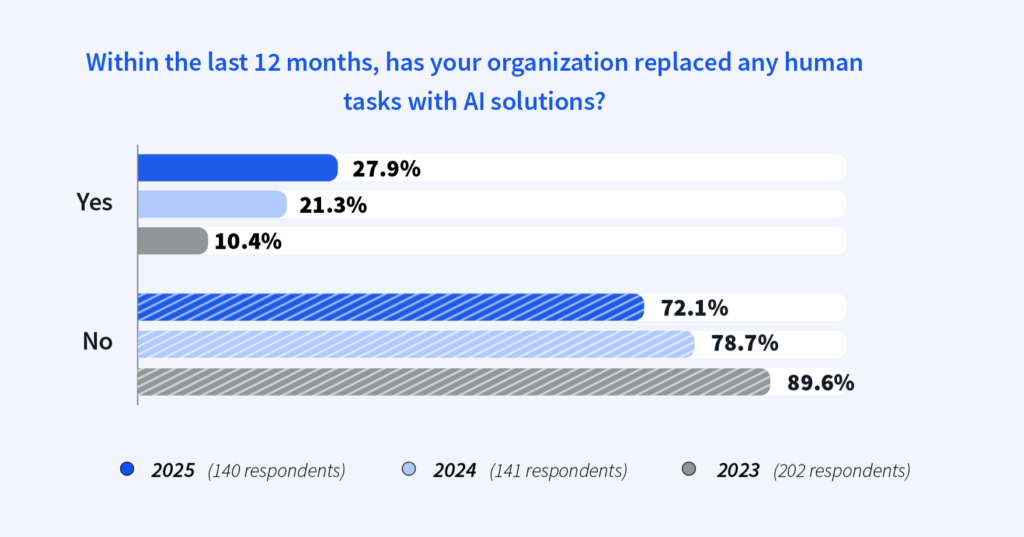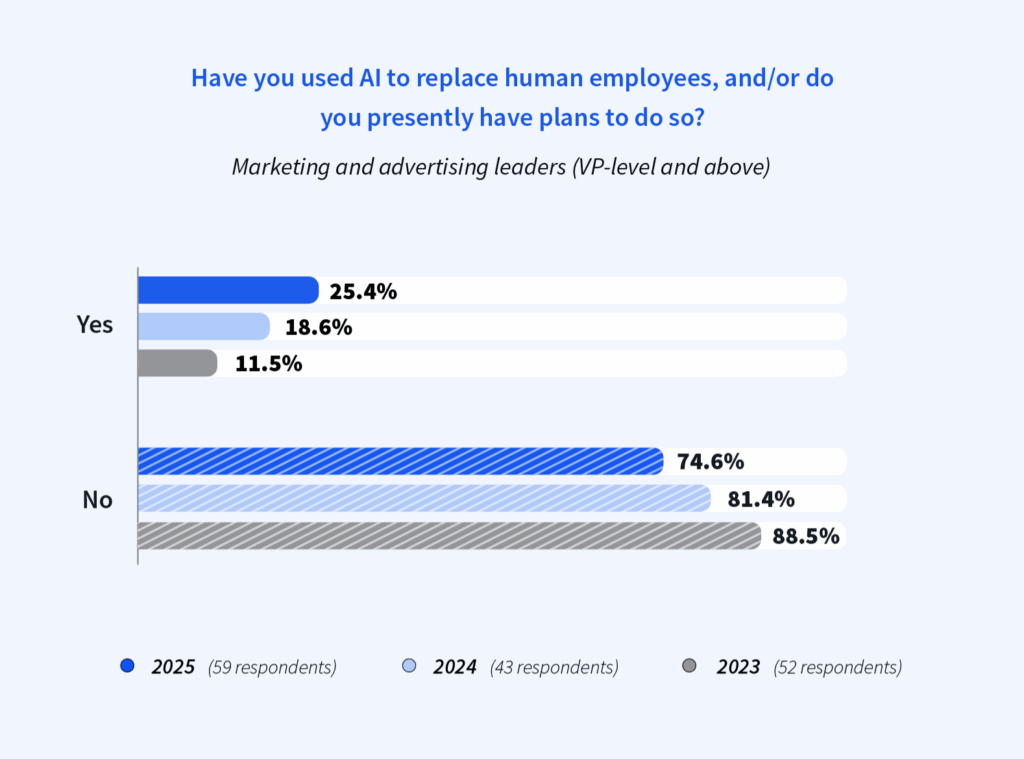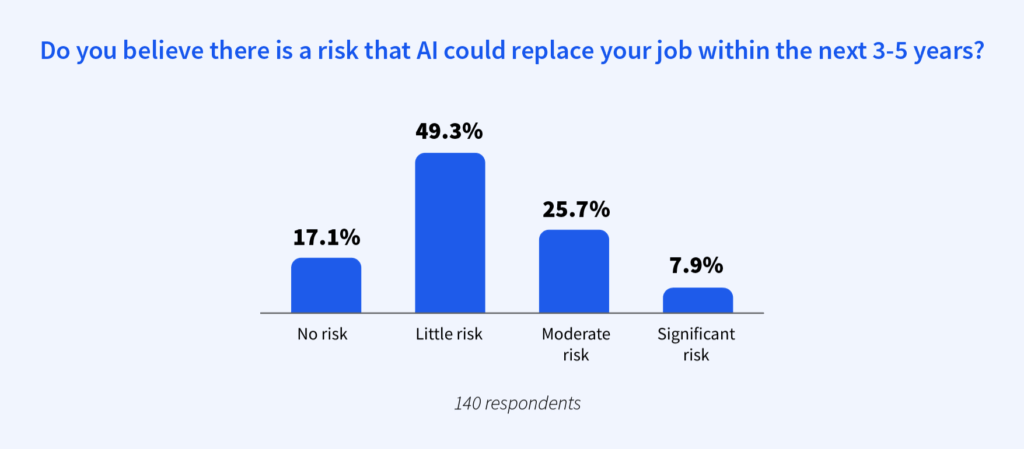
How AI will reshape work for advertisers is one of the biggest questions in the industry today.
AI use is climbing fast: In just one year, team use of the technology jumped from 74.6% to 94.9%. And investment continues to grow, with many organizations planning to increase spend on AI tools in the months ahead.
Still, adoption has outpaced outcomes in many ways. “Artificial intelligence is an incredible tool, and organizations should be thinking about and using it in a variety of ways,” says Dan Wilson, Group VP of Integrated Client Solutions at Basis. “However, there’s still a gap between the bold expectations for AI and the results these tools are currently capable of delivering.”
With adoption climbing rapidly but uncertainty still high, three key dynamics are emerging: AI is automating routine tasks, some jobs are being replaced while others evolve, and professionals’ confidence in their own job security doesn’t always align with leaders’ perspectives. Understanding these shifts is critical for marketers navigating what comes next.

Task replacement is accelerating as marketers embrace AI. For many teams, this has meant greater efficiency and the ability to shift time toward more strategic contributions. But these benefits come with a caveat, as many AI outputs still require human prompting and quality checks to ensure accuracy and brand alignment.
Content generation illustrates this dynamic particularly well. Wilson notes that while it can be tempting to use AI to produce content faster, cheaper, or in higher volumes, without human oversight it often adds noise rather than driving meaningful engagement. “Consumers are getting better at sniffing out AI content, and their tolerance for it is decreasing,” he says. “Given where AI capabilities are right now, human curation determines whether these tools add value or just create more clutter.”
This principle applies across task categories. Whether AI is being used to draft reports, analyze campaign data, or optimize media buys, the technology can automate parts of the work—but it rarely eliminates the need for human judgment.

More than a quarter of marketing and advertising leaders have used AI to replace employees or plan to do so—a figure that has more than doubled since 2023. The trend marks the early stages of a meaningful shift in how the industry’s workforce is structured.
So far, however, the changes remain targeted rather than sweeping. “Everyone’s afraid of AI taking jobs, but if you actually test the tools, you’ll find they still require an incredible amount of human intervention,” Wilson says.
In this context, organizations are identifying specific functions where AI can operate with minimal oversight and making strategic choices about where to invest in tools versus human talent. How this balance evolves will depend both on the pace of AI’s advancement and on the strategic decisions leaders make in response.

Despite the fact that more than a quarter of organizations have used or plan to use AI for job replacement, over 66% of industry professionals believe there is little or no risk that AI could replace their jobs within the next three to five years.
This confidence gap tells a complex story. While professionals working directly with AI understand its current limitations and recognize where human expertise remains essential, individual experience doesn’t always predict organizational decisions. Leaders make workforce choices based on cost pressures, competitive positioning, and long-term automation potential.
For instance, a media planner who uses AI to speed up research may feel secure in their role because the technology still requires human judgment to optimize and finalize strategy. For some, that confidence is justified—they could shift into higher-level strategic work as AI handles routine data analysis. For others, leadership could decide to restructure a team so fewer planners manage the same workload. As AI continues to evolve, professionals who understand both the technology’s limitations and their organization’s strategic priorities will be better positioned than those who rely on confidence alone.
AI is driving efficiency across advertising, and roles are evolving alongside the technology. Tasks are being increasingly automated. Some positions are being eliminated. And professionals’ confidence in their own security doesn’t always align with the strategic decisions being made at the organizational level.
The path forward depends on how AI’s capabilities evolve and how effectively marketing organizations are able to harness them. With so much still in flux, the only certainty is that keeping a close eye on these trends will be essential for advertisers navigating the future of the industry and of their careers.
__
Looking for deeper insights on how AI is impacting jobs across marketing and advertising? We surveyed professionals from leading brands and agencies to gauge how the technology is transforming the industry’s workforce and how it could change advertising jobs in the years to come. Download the full report to see how AI is changing roles, where human curation remains essential, and what comes next.